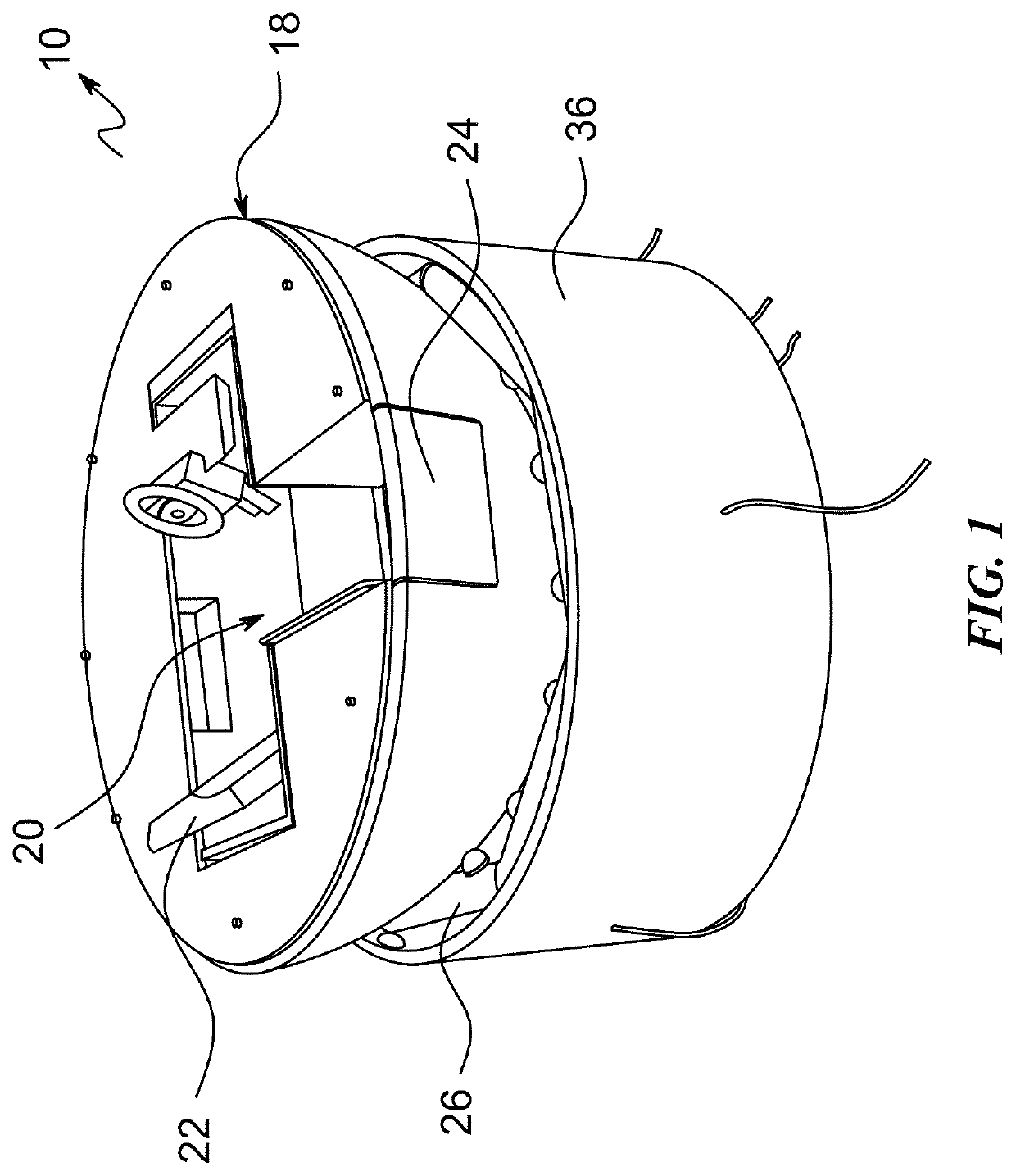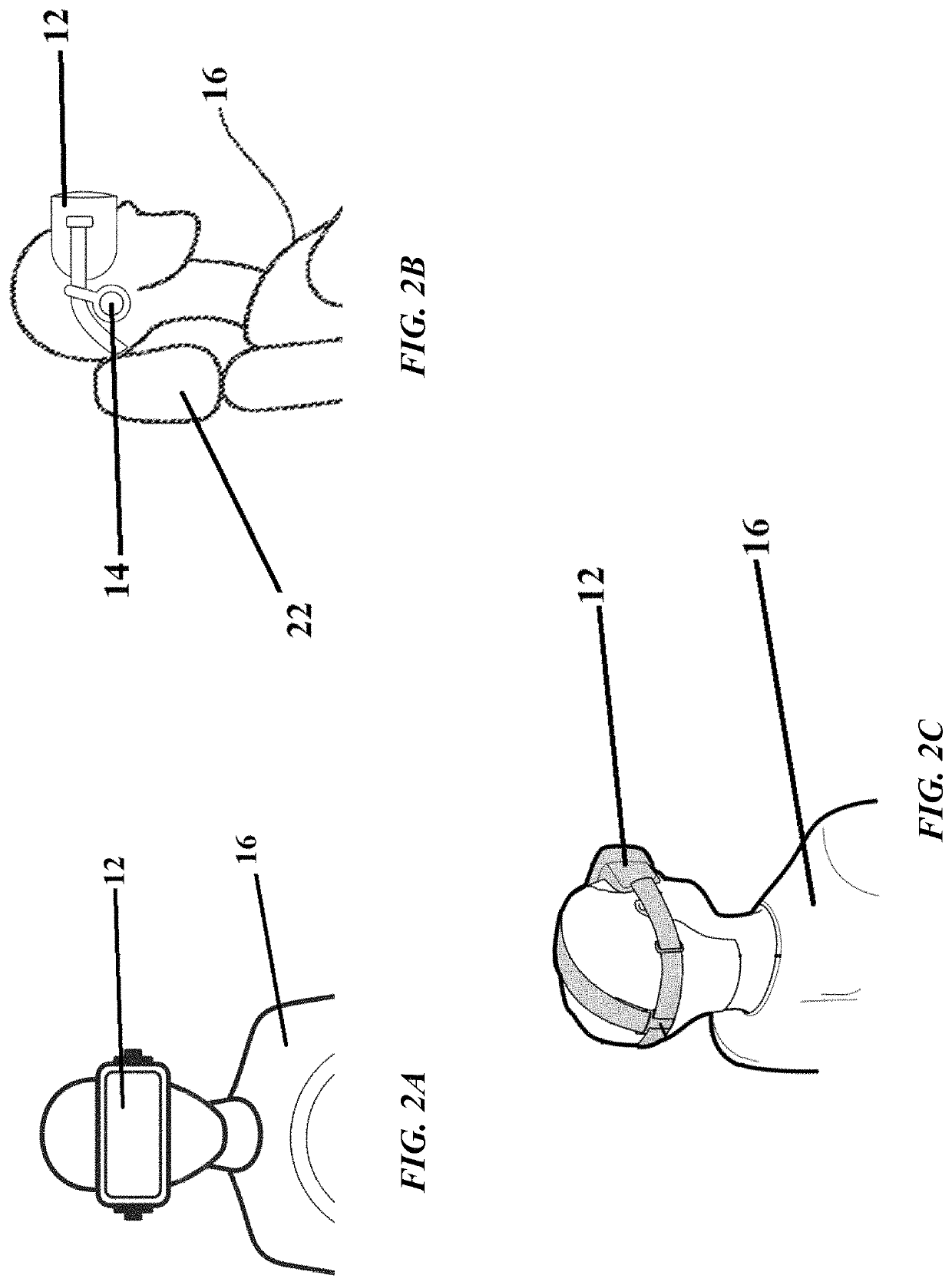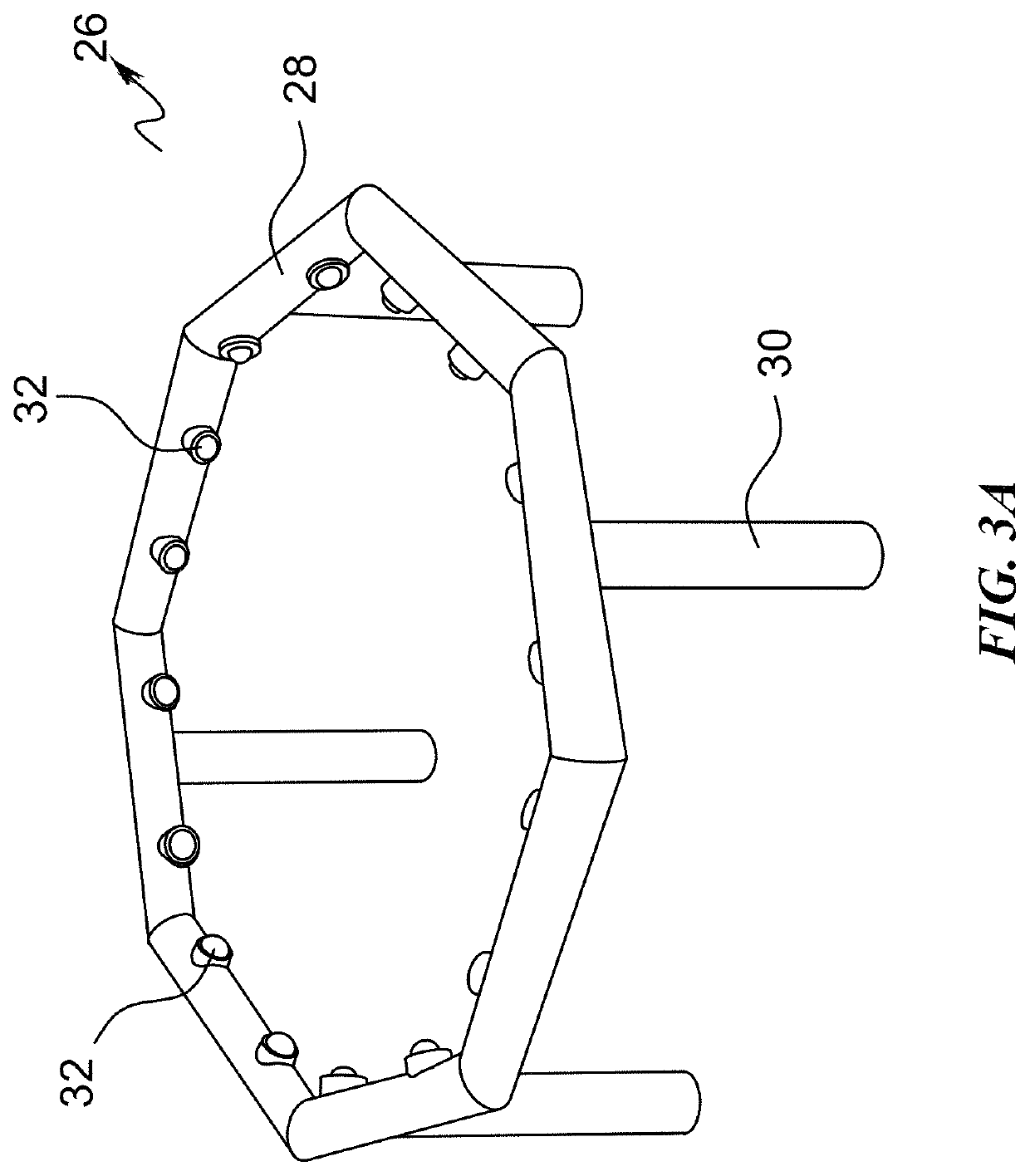Immersive multimodal motion simulator
a multi-modal and simulator technology, applied in the field of vehicle motion simulators, can solve the problems of motor vehicle crashes being the leading cause of death for u.s. teens, complex learning to drive an automobile, and requiring a substantial amount of practi
- Summary
- Abstract
- Description
- Claims
- Application Information
AI Technical Summary
Benefits of technology
Problems solved by technology
Method used
Image
Examples
Embodiment Construction
Figures—Reference Numerals
[0036]10—Immersive Multimodal Ride Simulator[0037]12—VR Headset[0038]14—Headphones[0039]16—User[0040]18—Cockpit[0041]20—Cabin[0042]22—Seat[0043]24—Door[0044]26—Cradle[0045]28—Hexagonal Frame[0046]30—Leg[0047]32—Omnidirectional Load Bearing Transfer Units[0048]34—Upright Member[0049]36—Wall[0050]38—Pitch Actuator[0051]40—Roll Actuator[0052]42—Yaw Actuator[0053]44—Extension Member[0054]46—Heave Actuator[0055]48—Piston[0056]50—Cylinder[0057]52—Retract Flow Port[0058]54—Extend Flow Port[0059]56—Ball & Socket Joint
[0060]Embodiments of the present disclosure are explained in detail below with reference to the various figures. In the following description, numerous specific details are set forth to provide an understanding of the embodiments and examples. However, those of ordinary skill in the art will recognize a number of equivalent variations of the various features provided in the description. Furthermore, the embodiments and examples may be used together in ...
PUM
 Login to View More
Login to View More Abstract
Description
Claims
Application Information
 Login to View More
Login to View More - R&D
- Intellectual Property
- Life Sciences
- Materials
- Tech Scout
- Unparalleled Data Quality
- Higher Quality Content
- 60% Fewer Hallucinations
Browse by: Latest US Patents, China's latest patents, Technical Efficacy Thesaurus, Application Domain, Technology Topic, Popular Technical Reports.
© 2025 PatSnap. All rights reserved.Legal|Privacy policy|Modern Slavery Act Transparency Statement|Sitemap|About US| Contact US: help@patsnap.com



